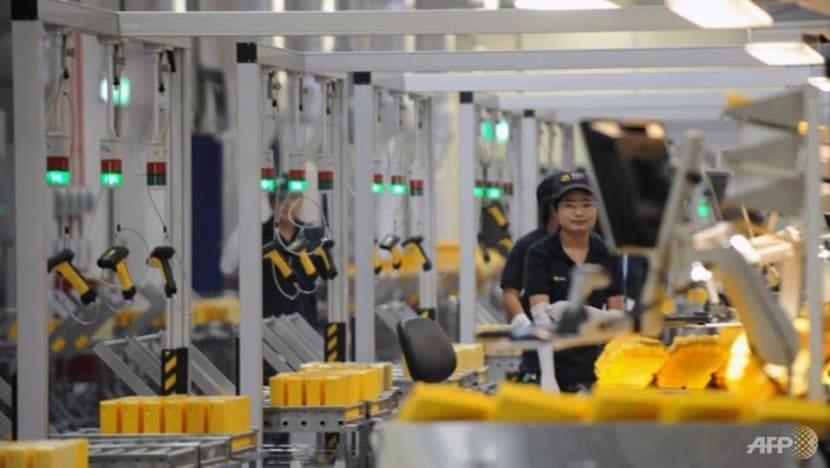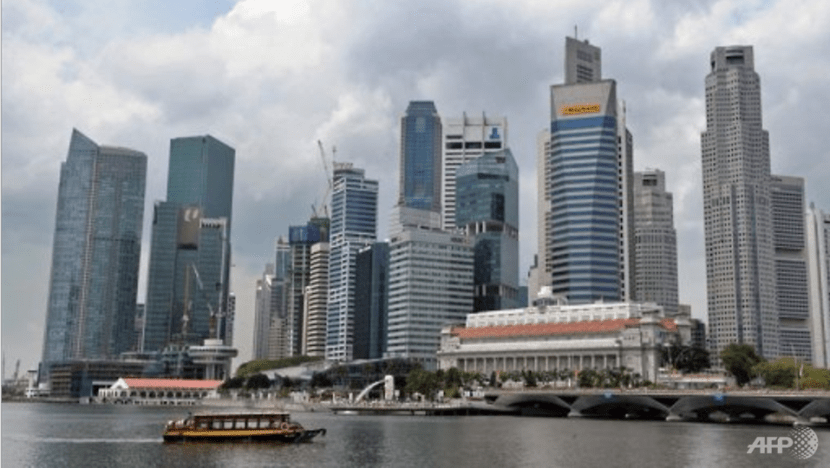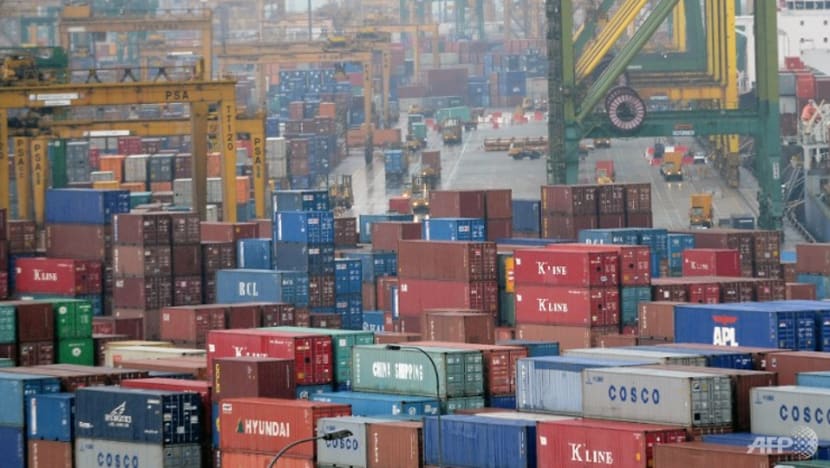commentary Commentary
Commentary: Singapore and the dreaded R word - recession
Bad news is good news for the prepared, says Singapore Business Federation CEO Ho Meng Kit.

File photo of a manufacturing facility in Singapore. (Photo: AFP/Roslan Rahman)
SINGAPORE: The R word has been in the headlines and conversations of late, especially in the wake of the latest gross domestic product (GDP) flash data showing almost flat growth in the second quarter of 2019.
The figures paint a grim picture. At 0.1 per cent year-on-year, the advance estimates, based on preliminary numbers from April and May, marks the slowest growth rate since the global financial crisis in 2008.
Dragged down by the manufacturing sector, it was a much sharper slowdown than expected, well below the growth estimate of 1.1 per cent put forth by private economists in a Bloomberg poll.
Retail sales figures, released the same day, showed a slide for the fourth straight month with a 2.1 per cent drop in May.
The lacklustre data sent economists scrambling to trim Singapore’s full-year growth forecasts for 2019 to as low as zero to 1 per cent, with some flagging the heightened possibility of a technical recession and even risks of a deeper recession this year.
READ: Amid economic uncertainty, Singapore’s millennials face a disrupted narrative, a commentary
A STORM BREWING FOR SOME TIME
While it’s best to leave the tricky job of recession forecasting to the economists, what is clear is that a storm is – and has been – brewing on the horizon for some time now.
Trade tensions, slowing Chinese growth, and a messy and uncertain Eurozone have cast a shadow on an increasingly strained global economy.
READ: Singapore trade, disrupted, (not) business as usual, a commentary
As a small, open economy with trade three times of our GDP, Singapore’s slowdown is inevitable, given the global investment and trade climate.

READ: Few options for China in next phase of Trump’s trade war, a commentary
But as Minister for Trade and Industry Chan Chun Sing pointed out, Singapore’s current economic challenges also run deeper than the previous financial crises.
Beyond the tail-end of a mature economic cycle, Singapore is now dealing with longer-term shifts in supply chains and production patterns.
Underlying Singapore’s slowdown may also be deeper structural issues such as declining productivity growth, slowing population growth, rising costs and weak innovation capacity.
BAD NEWS IS GOOD NEWS FOR THE PREPARED
It’s hard to tell if the slowdown will eventually lead to a recession, but the news certainly serves as a timely wake-up call for the business community not to be complacent and to persist with transformation efforts, making the most of the opportunities still abundant in the region.
As external factors play out more clearly in the next few months, I urge businesses to stay vigilant and monitor the situation closely.
LISTEN: The Pulse - A rougher ride ahead? The outlook for the Singapore economy
Like a forest fire that clears out dead brush, leaner times can also be fertile ground for innovation and new growth.

Our companies should continue to innovate and transform, leveraging the various initiatives already in place, such as the Industry Transformation Programme announced in 2016.
Under the programme, Industry Transformation Maps (ITMs) have been developed for 23 industries, covering over 80 per cent of Singapore’s GDP. Taking a targeted and industry-focused approach, these roadmaps are critical in enabling our SMEs to prepare for the future.
The Government has also stepped up support through this year’s Budget measures, which are focused on helping our companies adapt and remain competitive by building deep enterprise capabilities.
READ: The Singapore Budget and Heng Swee Keat’s shift away from Big Government, a commentary
Take for example the SMEs Go Digital, which aims to help companies employ digital technology, build capabilities so they can participate in the growing digital economy or the Innovation Agents Programme which supports businesses in their innovation efforts to accelerate their growth.
When it comes to tapping regional and global opportunities, companies can tap on the newly launched Scale-up SG, a 2.5-year programme that aims to help aspiring, high-growth companies to scale rapidly and expand abroad.
BRIGHT SPOTS REMAIN
In Parliament earlier this month, Minister Chan also called on our companies to see the world as their hinterland, instead of being limited by Singapore’s geographical size or location.

Despite the turbulence rocking the global economy, bright spots remain in our region.
ASEAN has fared relatively well. In the first quarter of 2019, Indonesia, Malaysia and Vietnam recorded 5.1 per cent, 4.5 per cent and 6.8 per cent growth respectively.
As trade with external markets stumble, it is increasingly important for ASEAN to tap on servicing intra-regional markets and Asia’s rising middle class and strengthen its position as an attractive single market.
The ASEAN e-Commerce Agreement signed last year should also facilitate growth in ASEAN’s digital economy, valued at US$240 billion by 2025. Other measures notched under ASEAN’s belt last year also include the launch of the ASEAN Single Window for faster customs clearance regionally.
To help our companies internationalise, the Singapore Business Federation has ramped up our Free Trade Agreement outreach, education efforts and overseas markets activities in the region.
Next month, we will be organising the fifth edition of the Singapore Regional Business Forum, along with the inaugural Singapore Regional Infrastructure Summit which connects our companies to regional infrastructure opportunities.
READ: From ice cream to chatbots – how TACs are driving transformation in Singapore, a commentary
With each crisis, Singapore has emerged stronger. We maintain robust economic fundamentals and sound strategies in the restructuring of the economy.

Despite the overall weakness, there are still pockets of strength such as the information and communications and construction sectors. Coupled with the Government’s commitment to strong fiscal management, Singapore should be well-positioned to weather the looming storm.
But to future-proof ourselves, our businesses have to find ways to enhance our competitiveness through innovation, productivity growth and internationalisation. And there’s no better time than now.
As US President John F Kennedy once famously said, the time to repair a roof is when the sun is shining.
Ho Meng Kit is CEO at Singapore Business Federation.















